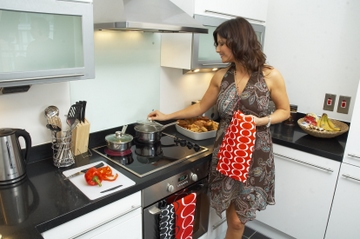 [Editors note: IMG MGMT is an annual image-based artist essay series. Today’s invited artist, Martha Rosler, works primarily with images and texts. Most of her work concerns social issues manifested in sites as various as the kitchen, the television set, the streets, transport systems, and the battlefield. Rosler’s career retrospective, “Positions in the Life World,” was exhibited in five European cities and two museums in New York City. She lives in Brooklyn, New York.]
[Editors note: IMG MGMT is an annual image-based artist essay series. Today’s invited artist, Martha Rosler, works primarily with images and texts. Most of her work concerns social issues manifested in sites as various as the kitchen, the television set, the streets, transport systems, and the battlefield. Rosler’s career retrospective, “Positions in the Life World,” was exhibited in five European cities and two museums in New York City. She lives in Brooklyn, New York.]
Woman in Kitchen
One of the enduring concerns of my work has been the depiction of women, especially in visual representations. Women are represented in public and especially in private spaces; among the latter are images of domesticity. Of images of the domestic sphere, the most likely sites are, of course, the bedroom, the bathroom, the living room, and the kitchen ”¦ especially—in advertising— the kitchen.
In advertising and magazine features in particular, the kitchen is presented as a site of labor (including of external time- and labor-saving interventions on the part of a host of designated experts). The woman in the kitchen represents myriad sensibilities. She is a sign of bounty; of availability; of nurturance; of submissiveness; of drudgery and servitude; of ethnic Otherness; of mastery; of happiness; of pleasure; of loneliness; of outbursts of rage or gaga craziness (and of murder and even of aestheticized suicide); of sexual coyness or sauciness. And, of course, of creativity.
Yet photographs of women in kitchens do not celebrate creativity for its own sake, but rather creativity for the sake of service to another or others. These photographs show women producing something that exists literally to be consumed by other people, not preserved like a piece of sculpture. Every image of a woman in a kitchen bespeaks an intimate personal relationship, mediated by rituals of food. The images of women sitting lonely in the kitchen (see below) speak precisely of that relationship: when they are not busy cooking or cleaning, the women are shown to be bereft, lacking. Even in the numerous pictures of women drinking coffee at the kitchen table while staring at a computer screen, the women are smiling; is this narcissism, or are they smiling for you?
Imagine the self-satisfied stare into the computer screen as the successor of the painterly image of Venus peering into her mirror. Now, the photographic act may stand in for the Cupid that often appears in that scene holding up the mirror to Venus’s bemused gaze. And that cup of coffee? Perhaps, with its resonances of self-gratification and indulgence, it represents the senses “lower” than sight, such as touch, a sensuous haptic quality often signified in the Venus paintings by glossy hair, velvet, and furs.

Titian, Venus with a Mirror/ Venus at Her Toilette, 1555.
National Gallery of Art, Washington DC.
The sudden spike in popularity of kitchen television “reality” shows, featuring primarily male professional chefs with attitude, along with the new movie chronicling the life and career of Julia Child, the star performer of the foundational television series that taught a postwar generation of housewives and others to become aspirational cooks, is worthy of comment. Cooking-as-athletic-activity offers another instance of interpenetration of the domestic sphere with ideals of celebrity and the adulation it brings while underlining the “deskilling” of the average person. In the 1960s and 1970s the sudden proliferation of glitzy and glamorizing cookbooks (made more appealing by the dramatic improvement in relatively cheap color printing) underpinned the Baby Boomers’ new found interest in food as cuisine.
But more than teaching people to cook, the books showed us a populace of armchair gourmets who read, enjoyed, and went out to eat. The interest in food as object of representation, in other words, was part and parcel of the movement away from the heavily propagandized postwar idea of the housewife as both producer and consumer of food, part of the effort to get women out of the workplace and back into the home. I am referring to the decline of cooking as a taken-for-granted family woman’s daily chore and responsibility much like vacuuming, making the beds, picking up the kids, and shopping (some of which themselves may be fading as daily necessary tasks). Books—and now television—have re-presented it as a spectator sport.
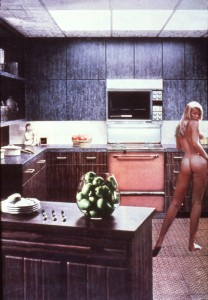
Martha Rosler, "Bowl of Fruit" from "Body Beautiful: Beauty Knows No Pain" c.1970
As a result of my interest in the popular representation of the kitchen as a workplace for women, I have produced a lot of work in which the preparation of food, especially as “cuisine,” is treated as a metaphor and substitution for— and sublimation of—creativity. The process of non-professional home cooking is connected to women’s creativity especially, since male chefs and, increasingly, female chefs are granted “creativity” in a professional context rather than on an uncompensated, “appreciation” basis. (But, it should be noted, that is not always the case with female chef figures, whose images are often “domesticated,” whether vaguely or egregiously. A few examples appear below, in which attractive women, fetchingly attired in chef’s whites, are smiling benignly and exhibiting the “pleased to serve you” posture—body language not generally attached to representations of working chefs.)
In other words, the narrative drive toward the de-professionalization of the female in roles of food preparation persists. Sometimes, obviously, the food under preparation stands in for the women themselves. The class issues—bringing in their train conspicuous consumption, image-building, pretentiousness, self-improvement, meditation, what have you—vie with the (neo)imperialist/consumerist ones, of First World consumers against (former) Third World producer countries and regions. Images of women in the latter situation serve more than one purpose. They provide contrast, of primitivism with our modern appurtenances, underlining our superiority; at the same time, they provoke a kind of false nostalgia in some viewers for their apparent dedication and a lack of ambiguity toward undoubtedly intricate, laborious, and time-consuming processes of production of food from “scratch,” without commercially available shortcuts, under challenging circumstances. Thus, they constitute a warning, a model, and a distancing device. Some images of women in such circumstances appear below—women over old-fashioned hot cast-iron stoves, women on their knees, women preparing elaborate old-country foods, women preparing food out of doors with simple tools, women producing colorful foods Westerners generally get to consume only in restaurants, old women slaving over restaurant burners.
For the Art Fag City project, focused on web surfing, I went on a hunt for photographic images that centered on a single female figure in the kitchen. Naturally enough, I found many, and here present a few examples. I confess I am not too surprised to report on the persistence of stereotypes, mythical narratives, and general hucksterism. In typically provocative fashion, a comment on a rather silly website showing some of the sexy ladies below (a site ostensibly retailing kitchen gadgetry) opined that the woman clad only in an apron was wearing the right garb and in the right place—the kitchen, in front of a stove.
Historical:

against kitchen servitude: Soviet Women’s Day poster
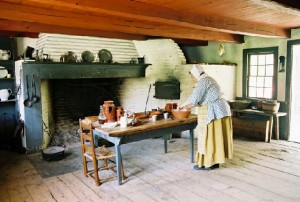
historic Richmond

early 20th Century one-room tenement
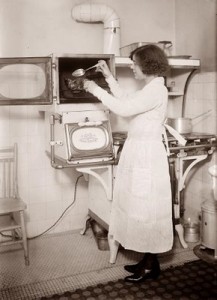
professionalized housewife, turn of the twentieth century
The Fifties & Before:
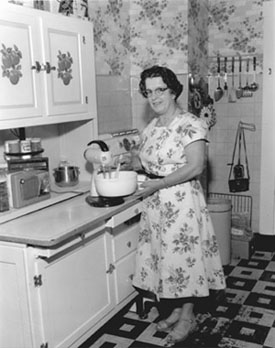
early modern

happy, happy, joyous, busy—better living through commercially packaged foods and electrical appliances in an updated kitchen
Native and Ethnic:


enthusiastic ethnic cook

ethnic medievalism
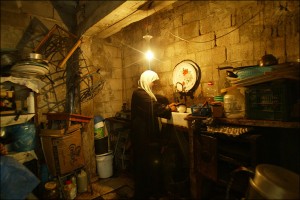
ethnic medievalism/Iraq
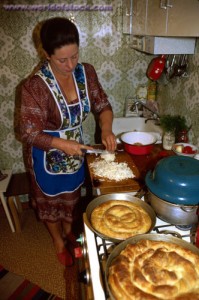
ethnic/prolific
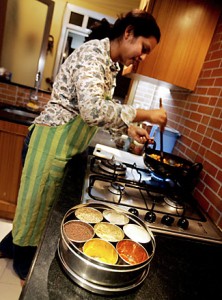
ethnic wizardry

native on knees
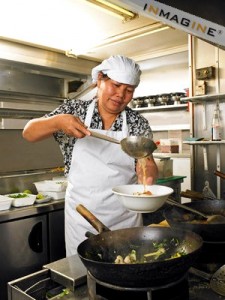
professional cook

spiritual ethnic
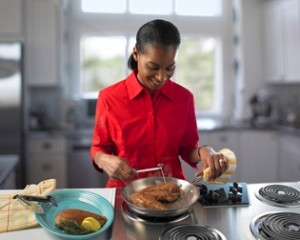
updated stereotype
Happy/Submissive:

happy oldster

happy servant

happy with hairdo
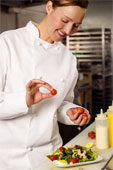
professional cook is happy

professional cook is happy, submissive, and bountiful

submissive happy
Pensive/Lonely:
lonely

pensive
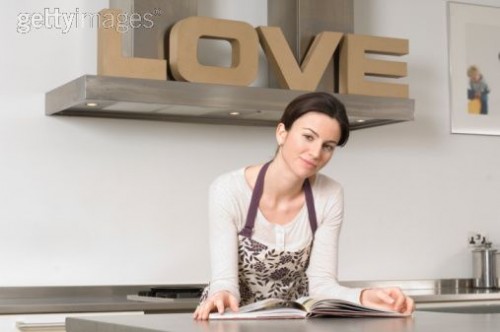
love sick
Computer and Tool Users:

modern gal

modern happy

self-satisfied
Pregnant:

big and bountiful

pregnant eve
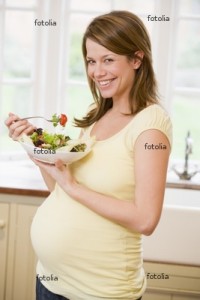
pregnant/happy

pregnant/happy
Servant:

happy servant spring cleaning

sexy servant

sincere
Gaga:

angry oldster

drugs
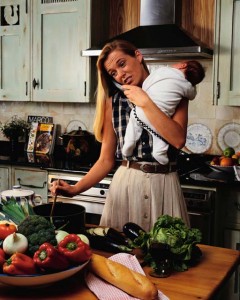
harried

raging

woopie!
Sexy:




party gal
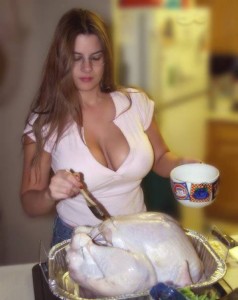
basting

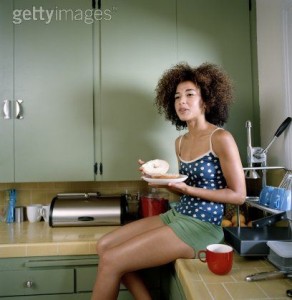
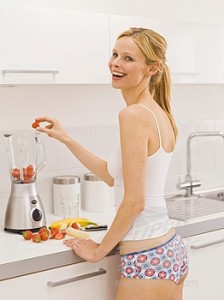





{ 12 comments }
A reminder: Comments that fail to address the post at hand or issue disrespectful feedback will not be approved.
A reminder: Comments that fail to address the post at hand or issue disrespectful feedback will not be approved.
too obvious? –
http://3.bp.blogspot.com/_BbYY71eCFug/Sf5aIuu8j-I/AAAAAAAAAmk/DxIDQDlv_7Q/s400/sherman_untitled_10.jpg
http://carriekravetz.files.wordpress.com/2009/04/cindysherman1.jpg
too obvious? –
http://3.bp.blogspot.com/_BbYY71eCFug/Sf5aIuu8j-I/AAAAAAAAAmk/DxIDQDlv_7Q/s400/sherman_untitled_10.jpg
http://carriekravetz.files.wordpress.com/2009/04/cindysherman1.jpg
Very cool piece, thank you.
I notice this alot with TV ads, always shocked that are still so many images of women in the kitchen, or obsessed with cleaning products, etc..
I find myself in the kitchen a lot more than I would like to be, but I’m vegan and also really focused on preparing my own food from mostly organic or local fruits and vegetables. It feels transgressive to me…There’s also this side-issue of making food for my husband (we both work nights, so I’ll make him a portion) and there’s a stigma in the wider culture of vegan food being emasculating for men, people even say soy raises estrogen levels in men (hmmmmm)
Very cool piece, thank you.
I notice this alot with TV ads, always shocked that are still so many images of women in the kitchen, or obsessed with cleaning products, etc..
I find myself in the kitchen a lot more than I would like to be, but I’m vegan and also really focused on preparing my own food from mostly organic or local fruits and vegetables. It feels transgressive to me…There’s also this side-issue of making food for my husband (we both work nights, so I’ll make him a portion) and there’s a stigma in the wider culture of vegan food being emasculating for men, people even say soy raises estrogen levels in men (hmmmmm)
Amusing selection–I especially like the “sexy” ones. It inspires the following do-it-yourself reply: Google Images search for GI Jane, Ginormica, Jamie Oliver and Bobby Flay. The world has changed a bit since the ’70s; not much, just a bit.
Amusing selection–I especially like the “sexy” ones. It inspires the following do-it-yourself reply: Google Images search for GI Jane, Ginormica, Jamie Oliver and Bobby Flay. The world has changed a bit since the ’70s; not much, just a bit.
THis is a TREMENDOUSLY great page! My favorites are angry oldster, pregnant eve and, of course, happy submissive!!!
THis is a TREMENDOUSLY great page! My favorites are angry oldster, pregnant eve and, of course, happy submissive!!!
What a great post!
What a great post!
Comments on this entry are closed.
{ 2 trackbacks }